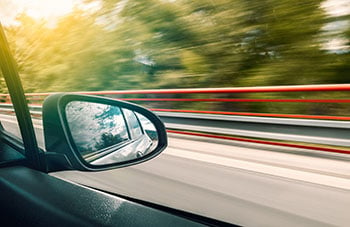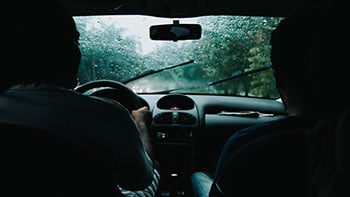The weather is warm and kids are out of school, which means it's vacation season. July is by far the most popular month for traveling, with more than 50% of Americans choosing this month for their vacation. As you're gearing up for your next road trip, here are some important things to remember.

Ensure Your Car Maintenance is Up-To-Date
Check the date and mileage for your next suggested oil change and tire rotation before your trip and make sure you're up-to-date on both. If you are close to your next service, you may want to get it done before you leave, just to be on the safe side. Check your car for any maintenance alerts, such as your check engine light or tire pressure light, and check the health of your windshield wipers, fluids and tires. It's also not a bad idea to get a full inspection done before leaving on a really long road trip.
Check the Weather
You may have thought to check the weather of your destination to make sure you were packing appropriately, but did you think to check the weather you'll be driving in? Look at the weather along your route so you're properly prepared. Heavy rain and bad weather can keep driving speeds slow so you may need to plan for a longer driving time. If it is supposed to be sunny, you may want to invest in a sunshade for the back seat if you are traveling with children.

Watch Your Speed
On long road trips it's easy to lose track of how fast you're going, especially when you've been on the road for hours and your kids keep asking "are we there yet?" but traveling at high speeds is dangerous. One third of all fatal crashes involved a driver who was speeding. Speeding gives a driver less time to avoid a crash and once they do crash, it's much more likely to be severe. Not only is driving at excessive speeds dangerous, it can also be expensive. A speeding ticket can cost between $150 and $1,000, and you can potentially lose your license.
Plan for Emergencies
Many car insurance plans offer roadside assistance in case of emergencies. Check with your insurance provider to see if this is something covered under your policy and, if so, make sure you have the correct phone number to call. It's also smart to make sure your insurance card is up to date with your current policy.
The National Highway Traffic Safety Administration (NHTSA) recommends traveling with an emergency kit, especially on long distance drives. They suggest it includes the following:
- Water
- Blankets
- A flashlight
- Jumper cables
- Flares
- Tools for changing a tire
- A first aid kit
- A fully charged cell phone
It's also a good idea to monitor your gas level and not let it get too low. You never know when you will get caught in a traffic jam and you could run out of gas if you get stuck idling on the interstate for too long. You could also come to a long stretch of road where there is no gas available. A good rule of thumb is to fill up when you get down to a quarter of a tank.
Child Proof Your Car
If you're traveling with young children, you'll want to take extra safety precautions. If your children are in car seats, check the car seat to make sure it's up to current safety standards and ready for your trip. Check your backseat for anything dangerous that could be in your child's reach. Pick up any small, swallowable items like loose change or buttons, and remove any poisonous substances. Long road trips allow for a lot of time for your child to get into something potentially hazardous.
It's true what they say, "getting there is half the fun," especially when you're prepared and have taken proper precautions to ensure you get to your destination safely. With so many people traveling in the month of July, you can never be too careful.

